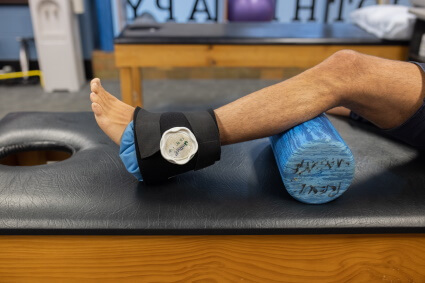When do I use ice and when do I use heat?
This is one of the most common questions we get here at Results from our patients.
To put it simply, cold is for pain and swelling. Heat is for tightness and stiffness.
Ice
In the management of injuries that are classified as acute, we often use ice or some form of cryotherapy. Injuries that are classified as acute tend to be things such as bumps, bruises, corks, sprains and strains. Many of these injuries typically occur on limbs and as such we do not indicate or put into practice the use of ice on necks and backs
The aim of using ice as a treatment is to get a reduction in pain and inhibit blood flow to an area. The purpose of inhibiting blood flow is to limit the amount of inflammation that can occur at these areas of acute injury.
Typically, ice is used in the first 72 hours of the injury and up to a week or so post-injury event.
It is a good idea to keep the ice in contact with the area of the body that has been acutely injured for 20 minutes at a time followed by a break of 20 minutes after this. Repeating the cycle for up to 3 sets.

When using ice it is important not to make direct contact with the skin for an extended period of time as it can lead to damage of the skin itself. We recommend using an ice’n’easy reusable ice bag as it provides a nice barrier between skin and ice and can be purchased from the clinic after an appointment. Other household items that work well are a bag of frozen peas or a plastic bag filled with ice wrapped in a cold washer.
Heat
Using heat as a treatment modality tends to be more for necks and backs or in the management of more chronic conditions. Often with necks and backs, the pain that is associated with these areas stems from muscle guarding and spasm which in turn causes stiffness.
Other conditions or areas in which we use heat as a treatment are joints like knees and ankles that are more chronic in nature. Osteoarthritic knees and ankles can be quite stiff and sore as a result of the degeneration occurring throughout the joint. Gentle heat encourages decreased stiffness, better movement and as such a reduction in pain.
When using heat to treat stiffness and pain, it’s important to use a temperature that is tolerable. As with ice, there can be damage to the skin if the bag is too hot. Popular heating methods are wheat bags and stick-on patches, however, in the clinic, we use moist heat packs for optimal results.
It’s important to point out that these treatments are used adjunct to other therapy and never on their own. At results, we believe in a balanced approach that requires manual therapy and exercises prescription as well as addressing psychosocial or environmental barriers in order to have effective treatment




